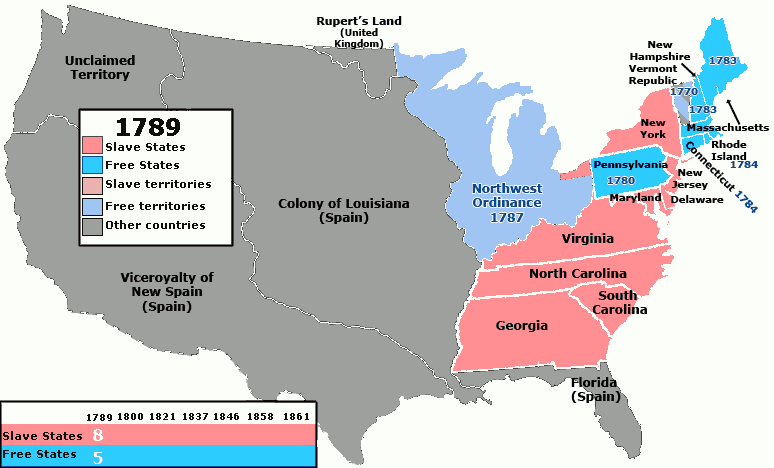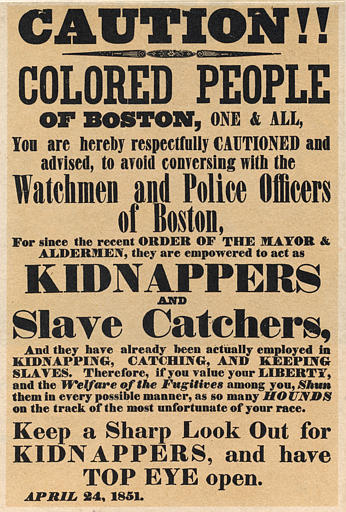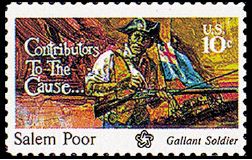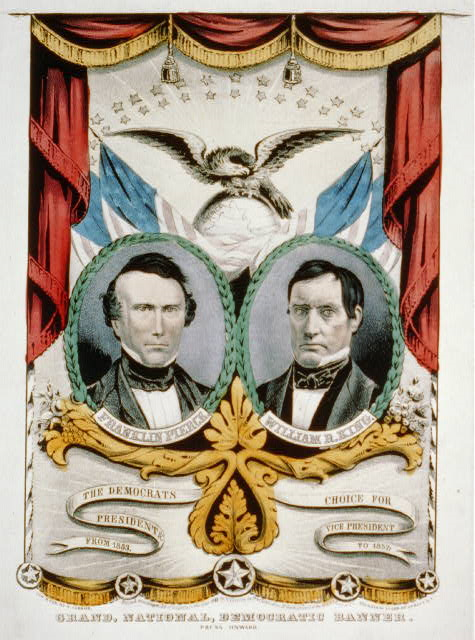|
Statue Of Millard Fillmore
''Millard Fillmore'' is a monumental statue in Buffalo, New York, United States. The statue, located outside of Buffalo City Hall, was designed by sculptor Bryant Baker. It honors Millard Fillmore, the 13th president of the United States who lived in Buffalo. It was dedicated on July 1, 1932, in conjunction with a nearby statue of Grover Cleveland, another former president from Buffalo, which was also designed by Bryant Baker. History Background Millard Fillmore was born in 1800 in the Finger Lakes area of upstate New York. In the 1820s, he moved to the Buffalo metropolitan area and began practicing law. After moving to Buffalo city proper, he began a career in politics, holding positions in the New York State Assembly and the United States Congress, among other offices. In 1849, he became the vice president of the United States under Zachary Taylor and, after Taylor's death in 1850, he became the president. In the 1852 presidential election, the Whig Party decided ... [...More Info...] [...Related Items...] OR: [Wikipedia] [Google] [Baidu] |
Millard Fillmore
Millard Fillmore (January 7, 1800 – March 8, 1874) was the 13th president of the United States, serving from 1850 to 1853. He was the last president to be a member of the Whig Party while in the White House, and the last to be neither a Democrat nor a Republican. A former member of the U.S. House of Representatives, Fillmore was elected vice president in 1848, and succeeded to the presidency when Zachary Taylor died in 1850. Fillmore was instrumental in passing the Compromise of 1850, which led to a brief truce in the battle over the expansion of slavery. Fillmore was born into poverty in the Finger Lakes area of upstate New York. Though he had little formal schooling, he studied to become a lawyer. He became prominent in the Buffalo area as an attorney and politician, and was elected to the New York Assembly in 1828 and the House of Representatives in 1832. Fillmore initially belonged to the Anti-Masonic Party, but became a member of the Whig Party as it formed in t ... [...More Info...] [...Related Items...] OR: [Wikipedia] [Google] [Baidu] |
United States Congress
The United States Congress is the legislature, legislative branch of the federal government of the United States. It is a Bicameralism, bicameral legislature, including a Lower house, lower body, the United States House of Representatives, U.S. House of Representatives, and an Upper house, upper body, the United States Senate, U.S. Senate. They both meet in the United States Capitol in Washington, D.C. Members of Congress are chosen through direct election, though vacancies in the Senate may be filled by a Governor (United States), governor's appointment. Congress has a total of 535 voting members, a figure which includes 100 United States senators, senators and 435 List of current members of the United States House of Representatives, representatives; the House of Representatives has 6 additional Non-voting members of the United States House of Representatives, non-voting members. The vice president of the United States, as President of the Senate, has a vote in the Senate ... [...More Info...] [...Related Items...] OR: [Wikipedia] [Google] [Baidu] |
New York City
New York, often called New York City (NYC), is the most populous city in the United States, located at the southern tip of New York State on one of the world's largest natural harbors. The city comprises five boroughs, each coextensive with a respective county. The city is the geographical and demographic center of both the Northeast megalopolis and the New York metropolitan area, the largest metropolitan area in the United States by both population and urban area. New York is a global center of finance and commerce, culture, technology, entertainment and media, academics, and scientific output, the arts and fashion, and, as home to the headquarters of the United Nations, international diplomacy. With an estimated population in 2024 of 8,478,072 distributed over , the city is the most densely populated major city in the United States. New York City has more than double the population of Los Angeles, the nation's second-most populous city. [...More Info...] [...Related Items...] OR: [Wikipedia] [Google] [Baidu] |
Twenty-First Century Books
Lerner Publishing Group, based in Minneapolis in the U.S. state of Minnesota since its founding in 1959, is one of the largest independently owned children's book publishers in the United States. With more than 5,000 titles in print, Lerner Publishing Group offers nonfiction and fiction books for grades K-12. History Lerner was founded in 1959 by Harry Lerner. The company started as a one-room office in the old Lumber Exchange Building in downtown Minneapolis. Lerner's sister-in-law, Marguerite Rush Lerner, M.D., asked him to publish her stories about childhood diseases. These became the Medical Books for Children series (1959). The company has expanded to encompass four offices: the main Lerner building, Lerner Distribution Center, and Muscle Bound Bindery, all located in Minneapolis, and a New York office located in the Empire State Building. In 1963, Lerner was the first publisher to print original art featuring multi-racial children, and has continued a tradition of innova ... [...More Info...] [...Related Items...] OR: [Wikipedia] [Google] [Baidu] |
University At Buffalo
The State University of New York at Buffalo (commonly referred to as UB, University at Buffalo, and sometimes SUNY Buffalo) is a public university, public research university in Buffalo, New York, Buffalo and Amherst, New York, United States. The university was founded in 1846 as a private medical college and merged with the State University of New York system in 1962. It is one of two flagship institutions of the SUNY system, along with Stony Brook University. As of fall 2023, the university enrolled nearly 32,000 students in 13 schools and colleges, making it the largest public university in the state of New York. Since its founding by a group which included future United States president Millard Fillmore, the university has evolved from a small medical school to a large doctoral university, research university. Today, in addition to the College of Arts and Sciences, the university houses the largest state-operated University at Buffalo School of Medicine and Biomedical Scien ... [...More Info...] [...Related Items...] OR: [Wikipedia] [Google] [Baidu] |
Slave States And Free States
In the United States before 1865, a slave state was a state in which slavery and the internal or domestic slave trade were legal, while a free state was one in which they were prohibited. Between 1812 and 1850, it was considered by the slave states to be politically imperative that the number of free states not exceed the number of slave states, so new states were admitted in slave–free pairs. There were, nonetheless, some slaves in most free states up to the 1840 census, and the Fugitive Slave Clause of the U.S. Constitution, as implemented by the Fugitive Slave Act of 1793 and the Fugitive Slave Act of 1850, provided that a slave did not become free by entering a free state and must be returned to his or her owner. Enforcement of these laws became one of the controversies that arose between slave and free states. By the 18th century, slavery was legal throughout the Thirteen Colonies, but at the time of the American Revolution, rebel colonies started to abolish the pra ... [...More Info...] [...Related Items...] OR: [Wikipedia] [Google] [Baidu] |
Compromise Of 1850
The Compromise of 1850 was a package of five separate bills passed by the United States Congress in September 1850 that temporarily defused tensions between slave and free states during the years leading up to the American Civil War. Designed by Whig senator Henry Clay and Democratic senator Stephen A. Douglas, with the support of President Millard Fillmore, the compromise centered on how to handle slavery in recently acquired territories from the Mexican–American War (1846–48). The provisions of the compromise were: * approved California's request to enter the Union as a free state * strengthened fugitive slave laws with the Fugitive Slave Act of 1850 * banned the slave trade in Washington, D.C. (while still allowing slavery itself there) * defined northern and western borders for Texas while establishing a territorial government for the Territory of New Mexico, with no restrictions on whether any future state from this territory would be free or slave * establis ... [...More Info...] [...Related Items...] OR: [Wikipedia] [Google] [Baidu] |
Fugitive Slave Act Of 1850
The Fugitive Slave Act or Fugitive Slave Law was a law passed by the 31st United States Congress on September 18, 1850, as part of the Compromise of 1850 between Southern interests in slavery and Northern Free-Soilers. The Act was one of the most controversial elements of the 1850 compromise and heightened Northern fears of a slave power conspiracy. It required that all escaped slaves, upon capture, be returned to the slave-owner and that officials and citizens of free states had to cooperate. The Act contributed to the growing polarization of the country over the issue of slavery. It was one of the factors that led to the founding of the Republican Party and the start of the American Civil War. Background By 1843, several hundred enslaved people a year escaped to the North successfully, making slavery an unstable institution in the border states. The earlier Fugitive Slave Act of 1793 was a Federal law that was written with the intent to enforce Article 4, Sectio ... [...More Info...] [...Related Items...] OR: [Wikipedia] [Google] [Baidu] |
Slavery In The United States
The legal institution of human chattel slavery, comprising the enslavement primarily of List of ethnic groups of Africa, Africans and African Americans, was prevalent in the United States of America from its founding in 1776 until 1865, predominantly in the Southern United States, South. Slavery was established throughout European colonization in the Americas. From 1526, during the early Slavery in the colonial history of the United States, colonial period, it was practiced in what became British America, Britain's colonies, including the Thirteen Colonies that formed the United States. Under the law, an enslaved person was treated as property that could be bought, sold, or given away. Slavery lasted in about half of U.S. states until Thirteenth Amendment to the United States Constitution, abolition in 1865, and issues concerning slavery seeped into every aspect of national politics, economics, and social custom. In the decades after the end of Reconstruction era, Recons ... [...More Info...] [...Related Items...] OR: [Wikipedia] [Google] [Baidu] |
Syracuse University Press
Syracuse University Press, founded in 1943, is a university press that is part of Syracuse University. It is a member of the Association of University Presses. Domestic distribution for the press is currently provided by the University of North Carolina Press's Longleaf Services. History SUP was formed in August 1943 when president William P. Tolley promised Thomas J. Watson that the university will organize a press to print IBM's ''Precision Measurements in the Metal Workings Industry''. Matthew Lyle Spencer of the School of Journalism became the first chair of the board of directors and Lawrence Siegfried was the first editor. About The areas of focus for the Press include Middle East studies, Native American studies, peace and conflict resolution, Irish studies and Jewish studies, New York State, television and popular culture, sports and entertainment. The Press has an international reputation in Irish studies and Middle East studies. The Press has never owned its o ... [...More Info...] [...Related Items...] OR: [Wikipedia] [Google] [Baidu] |
Whig Party (United States)
The Whig Party was a mid-19th century political party in the United States. Alongside the Democratic Party, it was one of two major parties from the late 1830s until the early 1850s and part of the Second Party System. As well as four Whig presidents (William Henry Harrison, John Tyler, Zachary Taylor, and Millard Fillmore), other prominent members included Henry Clay, Daniel Webster, Rufus Choate, William Seward, John J. Crittenden, and John Quincy Adams (whose presidency ended prior to the formation of the Whig Party). The Whig base of support was amongst entrepreneurs, professionals, Protestant Christians (particularly Evangelicals), the urban middle class, and nativists. It had much less backing from poor farmers and unskilled workers. The party was hostile towards the ideology of " manifest destiny", territorial expansion into Texas and the Southwest, and the Mexican–American War. It disliked presidential power, as exhibited by Andrew Jackson and James K. ... [...More Info...] [...Related Items...] OR: [Wikipedia] [Google] [Baidu] |
1852 United States Presidential Election
United States presidential election, Presidential elections were held in the United States on November 2, 1852. History of the Democratic Party (United States), Democratic nominee Franklin Pierce defeated United States Whig Party, Whig nominee General Winfield Scott. Incumbent Whig President Millard Fillmore had succeeded to the presidency in 1850 upon the death of President Zachary Taylor. Fillmore endorsed the Compromise of 1850 and enforced the Fugitive Slave Act of 1850, Fugitive Slave Law. This earned Fillmore Southern voter support and Northern voter opposition. On the 53rd ballot of the sectionally divided 1852 Whig National Convention, Scott defeated Fillmore for the nomination. Democrats divided among four major candidates at the 1852 Democratic National Convention. On the 49th ballot, dark horse candidate Franklin Pierce won nomination by consensus compromise. The Free Soil Party, a third party (United States), third party opposed to the extension of slavery in the Uni ... [...More Info...] [...Related Items...] OR: [Wikipedia] [Google] [Baidu] |








